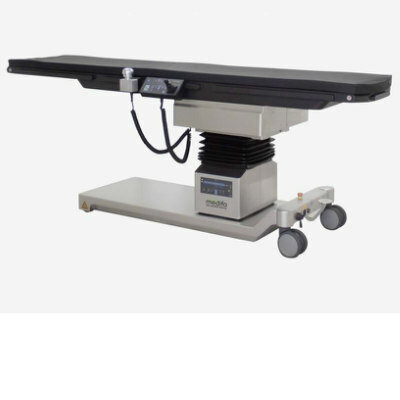Autistic Brain Features Revealed Using Novel MRI Analysis
By MedImaging International staff writers
Posted on 15 Sep 2011
Researchers have used a novel technique for studying brain-scan data to distinguish children with autism from typically developing children. Their discovery revealed that the gray matter in a network of brain regions known to affect social communication and self-related thoughts has a distinct organization in individuals with autism. Posted on 15 Sep 2011
The findings were published online in September 2011 in the journal Biological Psychiatry. While autism diagnoses are now based completely on clinical observations and a range of psychiatric and educational tests, researchers have been making advances toward identifying anatomical features in the brain that would help to determine whether a person is autistic.
“The new findings give a uniquely comprehensive view of brain organization in children with autism and uncover a relationship between the severity of brain-structure differences and the severity of autism symptoms,” said Vinod Menon, PhD, a professor of psychiatry and behavioral sciences and of neurology and neurological sciences at Stanford University School of Medicine (CA, USA), who led the research.
“We are getting closer to being able to use brain-imaging technology to help in the diagnosis and treatment of individuals with autism,” said child psychiatrist Antonio Hardan, MD, who is the study’s other senior author and an associate professor of psychiatry and behavioral sciences at Stanford. Dr. Hardan treats patients with autism at Lucile Packard Children’s Hospital (Palo Alto, CA, USA). Brain scans are not likely to replace completely conventional methods of autism diagnosis, which rely on behavioral assessments, Dr. Hardan added, but they may eventually aid diagnosis in toddlers.
Autism occurs in about one in every 110 children. It is a disabling developmental disorder that impairs a child’s language skills, social interactions and the ability to sense how one is perceived by others.
The study compared magnetic resonance imaging (MRI) data from 24 autistic children aged 8 to 18 with scan data from 24 age-matched, typically developing children. The data were collected at the University of Pittsburgh (PA, USA). “We jumped at the results,” Dr. Menon said. “Our approach allows us to examine the structure of the autistic brain in a more meaningful manner.” The new findings expand scientists' basic knowledge of the core brain deficits in autism, he added.
The analysis method, called multivariate searchlight classification, divided the brain with a three-dimensional grid, then examined one cube of the brain at a time, and identified regions in which the pattern of gray matter volume could be used to discriminate between children with autism and typically developing children.
Instead of comparing the sizes of individual brain structures, as prior studies have done, the new analysis generated something akin to a topographical map of the entire brain. The scientists essentially mapped the autistic brain’s distinct hills and valleys, uncovering slight differences in the physical organization of the gray matter.
Such analysis may be a more useful approach than previous tacks. Earlier studies, for instance, suggested that people with autism might have larger brains in toddlerhood or have a large defect in one brain structure. This study took a different approach and discovered several autism-associated differences in the Default Mode Network, a set of brain structures important for social communication and self-related thoughts. Specific structures that differed included the posterior cingulate cortex, the medial prefrontal cortex, and the medial temporal lobes. These findings align well with recent theoretical and functional MRI studies of the autistic brain, which also point to differences in the Default Mode Network, Dr. Menon reported.
Once Dr. Menon and his team had found where the differences in autistic brains were located, they were able to use their analysis to classify whether individual children in the study had autism. They used a subset of their data to “train” the mathematic algorithm, and then ran the remaining MR brain scans through the algorithm to classify the children.
“We could discriminate between typically developing and autistic children with 92% accuracy on the basis of gray matter volume in the posterior cingulate cortex,” said Lucina Uddin, PhD, the study’s first author. Dr. Uddin is an instructor in psychiatry and behavioral sciences at Stanford.
Moreover, the children with the most severe communication deficits, as gauged on a standard behavioral scale for diagnosing individuals with autism, had the biggest brain structure differences. Severe impairments in social behavior and repetitive behavior also demonstrated a trend toward association with more severe brain differences.
Dr. Menon and his team plan to repeat the study in younger children and to extend it to larger groups of subjects. If the results are validated, the new method offers the possibility of several approaches in autism diagnosis and treatment. For instance, brain scans might eventually help differentiate autism from other behavioral disorders such as attention deficit hyperactivity disorder, or might predict whether high-risk children, such as those with autistic siblings, will go on to develop autism themselves. Brain scanning might also be able to predict what type of deficits will occur in a child with a new autism diagnosis, allowing clinicians to target their treatments to a child’s predicted deficits. “Scans would likely be used alongside clinical expertise, giving that extra hint from the brain data,” Dr. Uddin said.
When such integrated assessments are possible, the researchers hope they will allow clinicians to construct personalized profiles of each patient. “We hope we’ll eventually be able to tell parents, ‘Your child will probably respond to this treatment, or your child is unlikely to respond to that treatment,’” Dr. Hardan concluded. “In my mind, that’s the future.”
Related Links:
Stanford University School of Medicine
Lucile Packard Children’s Hospital
University of Pittsburgh














